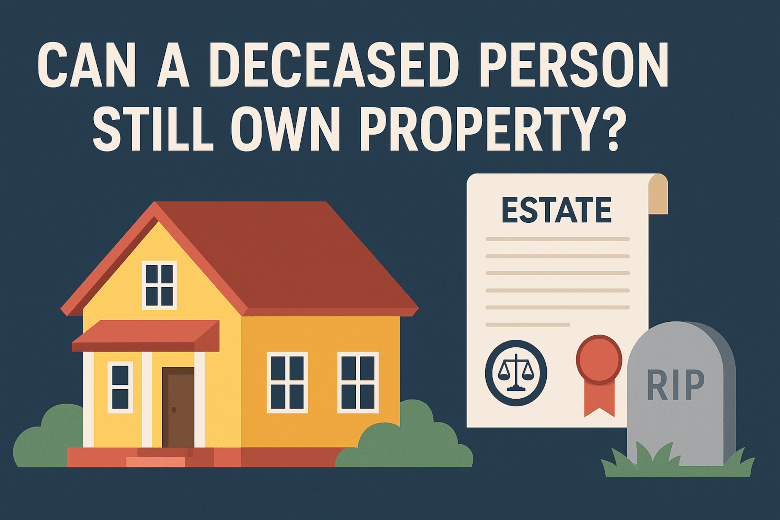Summary
When someone passes away, their ownership of real estate or personal property doesn’t instantly vanish—it legally transfers to their estate. Understanding how and when that ownership is resolved is essential for executors, heirs, and attorneys managing probate. This guide explains how property ownership is treated after death, who is responsible for it, and how it ultimately gets distributed.
- Deceased persons technically do not own property—their estate does.
- Property remains in the estate until probate or estate administration concludes.
- Title transfers depend on wills, state intestacy laws, or joint ownership structures.
- Unclaimed or disputed property may trigger a probate court proceeding.
- Real estate may require affidavits of heirship or court orders for transfer.
Overview
Property ownership doesn’t cease when someone dies—it transitions. Whether it’s a house, vehicle, or bank account, those assets become part of the deceased person’s estate. Until legally transferred to the rightful heir or beneficiary, the estate retains legal title, managed by an executor or court-appointed administrator. How that transition occurs depends on whether the deceased had a will, the nature of property ownership, and individual state laws governing probate.
Common Challenges
- Unclear ownership: Lack of a will or title documentation can lead to disputes over rightful ownership.
- Out-of-state real estate: Property located in a different state requires ancillary probate, complicating administration.
- Heirs unknown or missing: Real property title cannot transfer until all heirs are accounted for.
- Multiple joint owners: Survivorship rights may override provisions in a will.
Step-by-Step Process
1. Determine Property Type
Identify if the asset was held as sole ownership, joint tenancy, tenants in common, or community property (for states like California, Texas, or Arizona).
2. Open Probate (If Necessary)
Most property transfers require a probate case, particularly if there is no beneficiary designation. This includes filing in the county where the deceased resided or owned real estate.
3. Verify Title or Ownership Records
Check county property records, deeds, and titles to confirm current ownership and liens. If unclear, consider filing an Affidavit of Heirship in states that allow non-court transfers.
4. Distribute Assets Legally
After debts are paid and the court approves distribution, the executor can transfer the title to heirs or beneficiaries by deed, title reassignment, or account changes.
5. File with the County or Agency
Once assets are reassigned, updated deeds or titles must be recorded with the county recorder or DMV to complete the legal transfer.
FAQs
Can a deceased person’s name stay on a property title?
Temporarily, yes. But title must eventually be updated to reflect current ownership after probate or estate settlement.
Who manages property after the owner dies?
The court-appointed executor or administrator is responsible for maintaining and managing the estate’s property until it’s distributed.
What happens if there’s no will?
The state’s intestacy laws will determine who inherits the property. A probate court will appoint someone to administer the estate.
Does jointly owned property avoid probate?
Yes, in most cases. If property was held as “joint tenants with right of survivorship,” it passes automatically to the surviving owner.
Can heirs sell property before probate ends?
No. Property cannot be sold until the estate is legally authorized to do so. Premature sales can cause legal disputes or invalidate transactions.
Expert Tips
- Check state-specific laws: Community property states have different rules than common law states.
- Record everything: Keep copies of deeds, affidavits, and court approvals for future title issues.
- Use an estate attorney: Legal guidance can prevent missteps that delay or invalidate property transfers.
- Hire a title company: For real estate, a title search helps verify ownership and avoid hidden issues.




